Film Inquiry Recommends: Japanese Crime Films
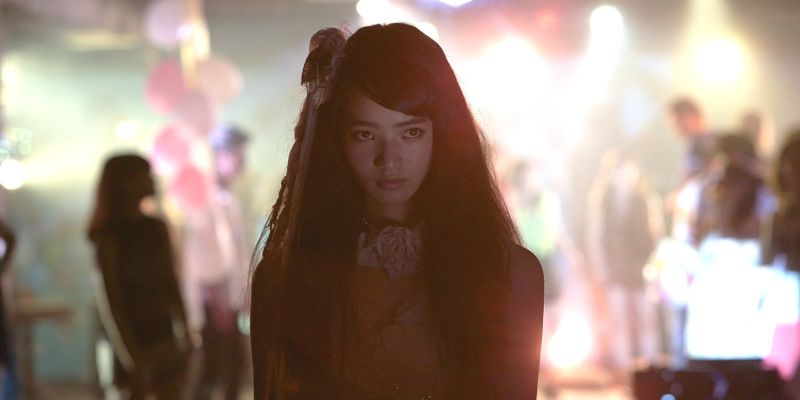
Alex is a 28 year-old West Australian who has a…
Over at our official Facebook page, we are currently posting daily film recommendations. Each week has a different theme. This is a collection of those recommendations! This week’s theme is Japanese crime films.
Japanese crime films are a much different type of film than the typical American gangster film. Whilst American crime stories are usually split between romanticized biopics about old school figures such as Al Capone, or morally ambiguous shoot ’em ups that involve law enforcement to put an end to things. Yakuza films are much more patriotic in their approach, exploring the idea of honour and brotherhood. Whilst the style of them has changed over time, episodic samurai films turning into gory gangster pieces, the themes and general narratives have stayed the same.
1. Battles Without Honor and Humanity: Volume 1 (1973, Kinji Fukasaku)
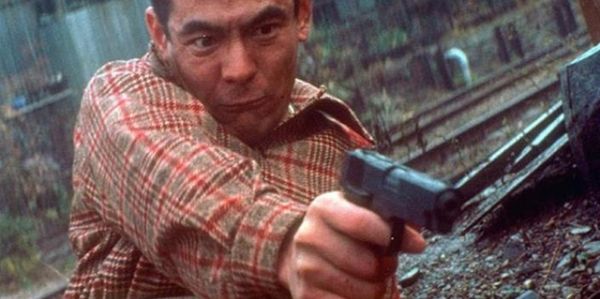
Battles Without Honor and Humanity: Volume 1 is the first part of Kinji Fukasaku’s epic crime franchise, a series of five films that redefined the idea of the Yakuza film in Japanese cinema. Made in a short of space of two years, the five films chronicle the life of ex-soldier Shozo Hirono (Bunta Sugawara), a tough criminal who manages to survive in the brutal Yakuza life, where everyone around him is constantly killing or being killed. Director Kinji Fukasaku is best known for directing the brilliant Battle Royale adaptation, a film which shares many visual and stylistic cues from these films, such as hyperactive violence, musical cues to signal death and freeze frames.
The film is set in Kure, Hiroshima, 1946, in a rugged post World War II environment. Shozo Hirono helps a friend kill a sword-wielding Yakuza member who attacked him earlier. Earning the trust of the Yamamori family, they decide to create the Yamamori Yakuza clan, lead by the treacherous Yoshio Yamamori (Nobuo Kaneko). Tracking the clan’s exploits throughout a ten-year period, Hirono is caught in several complicated criminal matters. Consequently, he receives several prison terms and the deaths of many gang members, as the Yamamori clan start their violent uphill battle towards supremacy in Hiroshima.
The film’s episodic and quite convoluted narrative might confuse many viewers, as the film is constantly referring to different off-screen characters and their various alliances that drive the main plotline. Looking past that, the film’s terrific documentary-like cinematography and vivid colour palette really give this film a distinctive look. It avoids the dreary drained look that one might expect from the film’s bleak nihilistic material.
The film’s repeated soundtrack is a fun trumpet-pumping riff which always punches up the gleeful violence being inflicted on-screen. Battles Without Honor and Humanity deserves its iconic status, a Yakuza film which modernised the standard Yakuza tropes, mixing American gangster aesthetics and post World War II nihilism into a dynamic original crime picture.
2. Youth of the Beast (1963, Seijun Suzuki)
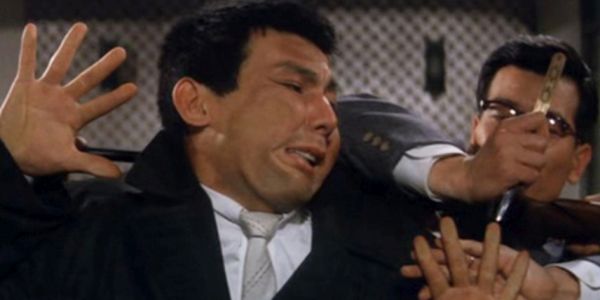
Youth of the Beast is one of Seijun Suzuki’s most underrated works, as Suzuki is usually associated with his other crime works with Joe Shishido such as Branded to Kill and Tokyo Drifter. The plot is something you’ve seen before, the Yojimbo/Fistful of Dollars plot, an outsider (Shishido) pits two Yakuza clans together in an attempt to rid both of them. Whilst the plot is quite simplistic (it’s pretty easy to follow, compared to Suzuki’s other films), the visuals are stunning.
The use of bold colours and vivid backgrounds give quite a theatrical and exaggerated feel to the film, elevating the material to a level which is quite fascinating to watch. Youth of the Beast also features some creative gun-play and confrontational scenes. One famous scene from the film is where Shishido is threatened by shotgun by one of the Yakuza leaders, whilst an entirely different film is projected in the background and club beats burst through an open door. It’s a film bursting with energy and severely under-seen by contemporary audiences.
3. The World Of Kanako (2015, Tetsuya Nakashima)
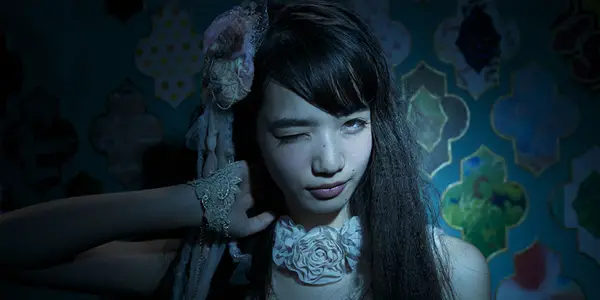
One of the most surprising titles I’ve watched lately, Tetsuya Nakashima’s The World of Kanako is a film I first heard about from a glowing recommendation from The Raid director Gareth Evans. The film received North American distribution from Drafthouse Films, an off-shoot of the Drafthouse Cinema brand, whose current filmography is a varied list of awesome documentary and genre films.
Due to the film’s intricate plot that juggles four different storylines at once and the grim and nihilistic nature of them, this is one film that is definitely not fit for mainstream audiences. Whilst most Japanese cinema that reaches international audiences include Takashi Miike, Sion Sono and Takeshi Kitano, The World of Kanako verifies that Tetsuya Nakashima is a director we should keep a keen eye on.
The main timeline focuses on Akikazu Fujishima, an alcoholic ex-cop who is estranged from his family. The family includes his ever-suffering wife and his mysterious teenage daughter, the titular Kanako (Nana Komatsu). After a bloodbath at a local deli leaves three people dead, low-level security guard Akikazu is seen as the lead suspect due to being the one who first found the bodies. As this is happening, his ex-wife reluctantly gets his help to find Kanako, who has been missing for five days with zero communication.
Akikazu’s investigation has him investigating the life of his daughter, slowly finding out who she is and what she has done to cause the ire of so many people around her. These small revelations start to slowly horrify Akikazu as his study gets him caught in the middle of a horrific Yakuza war between the mafia and a band of corrupt cops.
The World of Kanako is an exhilarating grim noir tale and the product of many volatile influences, ranging from the erratic nature of Sion Sono’s films to the misanthropic violent visuals of Sam Peckinpah’s best movies. The film manages to pull off the somewhat impossible – juggling four different timelines, which only occasionally intersect and still tell a compelling and genuinely gripping story.
Thanks to the constantly shifting cinematography and captivating pop-centric soundtrack, the film maintains its bombastic energy throughout its lengthy two-hour run-time. Whilst not a film for everyone due to its extremely nihilistic attitude and frequent bouts of physical and sexual violence, The World of Kanako is a must-see for any fans of off-beat cinema, and for those who are sick of the constant parade of PG-13 cinema that dominates most mainstream cinemas.
4. A Colt Is My Passport (1967, Takashi Nomura)
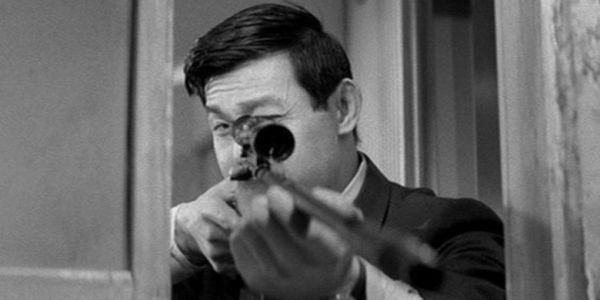
Just one of the 170 movies that actor Joe Shishido made for The Nikkatsu Corporation, Takashi Nomura’s A Colt is My Passport is an underrated Japanese crime film that was clutched from the harrows of obscurity by the Criterion Collection. Alongside I Am Waiting, Rusty Knife, Take Aim at the Police Van (by Seijun Suzuki), and Cruel Gun Story, A Colt is My Passport was released in a five-pack from Criterion Collection, highlighting some of the better crime titles from Nikkatsu.
Nikkatsu is Japan’s oldest movie studio, with its “golden age” being situated between 1954 and the 70’s, as the studio pumped out a variety of comedy, crime and samurai pictures, which provided the cinematic beginnings for many great Japanese genre directors such as Seijun Suzuki (who was fired after his highly regarded Branded To Kill was deemed too incomprehensible), Shōhei Imamura and Toshio Masuda.
A Colt Is My Passport has quite a simple plot, centering on Shuji Kamimura (Shishido), a hitman who the Yakuza has ordered to kill the rival gang’s boss. Whilst the assassination is successful, the two men are caught and quickly captured. To avoid any retaliation, the Yakuza gang that hired them ignore them and deny any responsibility. As Shuji escapes from the clutches of the angered Yakuza group, he decides to get revenge on the both groups and settle the score once and for all.
This film was one of the first lead acting roles for Joe Shishido, as he had previously been hired as a contract player by Nikkatsu studios back in 1954. He did some standard extra work in a variety of pictures, but after his cheek augmentation surgery, that gave him his defining look, he was promoted to bigger roles, usually in the role of mobster or criminal vigilante. A Colt is My Passport is one of the better Nikkatsu titles due to its gorgeous black and white cinematography, which is matched by some unique action sequences and a penetrating score.
5. Massacre Gun (1967, Yasuharu Hasebe)
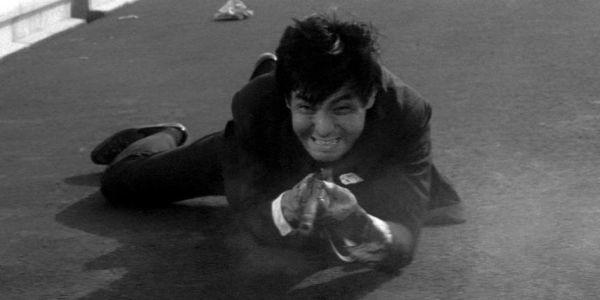
Another excellent Yakuza film starring Joe Shishido, Yashuharu Hasebe’s Massacre Gun is a violent and crazy gangster film that defies standard crime film tropes. This film was recently unearthed by Arrow Films, who have released a string of great Nikkatsu films as of late, such as Voice Without a Shadow (another Seijun Suzuki film), Red Pier and The Rambling Guitarist (with Joe Shishido as well).
These particular Nikkatsu films are known for their distinctive noir styles, using the chiaroscuro lighting from early 30’s noir, mixed-in Japanese traditional imagery and American gangster aesthetics. Whilst Suzuki is best known for his renegade tactics and his iconic visuals, his contemporaries at the time also produced some terrific crime films that are definitely worth checking out.
Ryûichi Kuroda (Shishido) is a mob hitman who is currently in a secret relationship with the innocent Aiko (Yoko Yamamoto). When Kuroda’s boss Akazawa orders Kuroda to kill her, Kuroda reluctantly performs the act. Feeling extreme guilt and anger, Kuroda quickly leaves Akazawa’s abusive Yakuza ring, starting his own personal crew with his brothers Eiji (Tatsuya Fuji) and Saburo (Jirō Okazaki). As Akazawa starts to get more aggressive, Kuroda is forced to fight back and wipe out the gang that he used to belong to, with the help of his untrained siblings.
Massacre Gun, as you can guess by the title, is much more violent than most of the other Yakuza films at the time, even if the film avoids any bloodshed (due to the low budget and social constrictions, actors clutch at gunshots and fall over in a very theatrical fashion), the body count is high and the film doesn’t shy away from the constant violence. The distinctive jazz score keeps the film’s mood constantly cool, adding the film’s overall charm. Whilst the film isn’t the most thematically deep film you’ll ever see, its hard-boiled action is enough to keep you entertained, backed up by the film’s interesting characters and defiantly cool atmosphere.
6. Drunken Angel (1948, Akira Kurosawa)
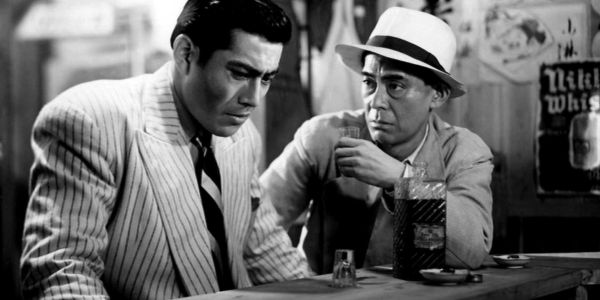
Akira Kurosawa is rightfully regarded as one of the most influential and important filmmakers ever in the history of cinema, with his filmography riddled with defining cinematic techniques and foundations for many genre classics today. Examples include 1949’s Stray Dog, a film which was the precursor of the buddy cop genre, Rashomon experimenting with different perspectives within film and Seven Samurai, creating a narrative that has been repeated hundreds of times throughout cinema.
Whilst these films are the ones most talked about when referencing Kurosawa, he does has some underrated gems littered throughout his 33 film strong filmography. I Live in Fear is a terrific character study exploring the after-effects of nuclear power, his adaptation of Dostoevsky’s The Idiot and his tender Yakuza film Drunken Angel. Kurosawa’s Drunken Angel is a thoughtful crime tragedy that served as the first collaboration between Kurosawa and actor Toshiro Mifune, one of the most celebrated actor/director combos in the history of film.
Drunken Angel focuses on the growing friendship between small-time doctor Sanada (Takashi Shimura, another frequent collaborator of Kurosawa’s) and Yakuza crony Matsunaga (Toshiro Mifune). After being wounded in a Yakuza shootout, Matsunaga is helped out by Sanada, a caring doctor who is surprised by Matsunaga’s subtle humanity and compassion. When Sanada learns that Matsunaga has tuberculosis, Matsunaga starts to become depressed, rejecting any medical help. His boss, Okada (Reisaburo Yamamoto) starts to slowly groom Matsunaga into becoming a top Yakuza chief, which forces Matsunaga to pick between the Yakuza life or treating his tuberculosis and trying to do something positive with his life.
During production of the film, Kurosawa’s father died, which put Kurosawa in a severely depressed mood throughout the shoot. He decided to channel this emotion into his filmmaking, which is quite evident when watching this. This is quite a bleak and nihilistic film, using the same ambiguous moral code seen in many of Kurosawa’s work.
Mifune gives a terrific performance as Matsunaga, constantly in a state of weariness and confusion, unsure of what to do with his troubled life and slowly learning most of it is not in his control. His chemistry with Takashi Shimura is quite genuine as well, their interactions giving the film its emotional heart. Usually overlooked in Kurosawa’s filmography, Drunken Angel is one of the more quiet and subtle Yakuza crime films out, but definitely worth your time.
7. Dragnet Girl (1933, Yasujiro Ozu)
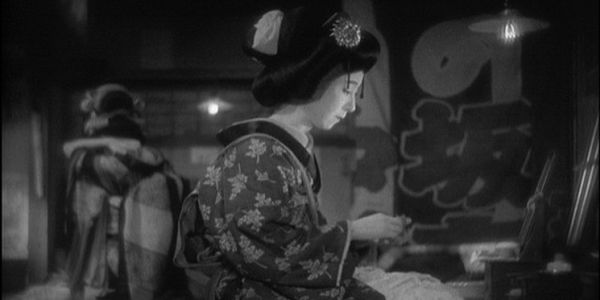
Much like Akira Kurosawa, Yasujiro Ozu is also a hugely influential and groundbreaking director whose body of work continues to impact most directors working today. Whilst Ozu is best known for his low-key but powerful family dramas such as Tokyo Story, Late Spring and An Autumn Afternoon, Ozu got his start in the silent film era, beginning with a series of comedies before going into more serious dramatic territory.
Between this transition, Ozu made Dragnet Girl, a silent crime film that is probably the most action-packed film Ozu ever made (a statement which sounds much worse than it actually is). Written by Tadao Ikeda, a frequent collaborator of Ozu’s, Dragnet Girl is a redemption story that infuses inventive camerawork and engaging performances to deliver a genuinely distinctive gangster film, especially for its time of release.
Low-level gangster Joji (Joji Oka) is currently dating Tokiko (Kinuyo Tanaka), a typist who accepts Joji’s criminal lifestyle. When young student Hiroshi (Kōji Mitsui) joins Joji’s gang, Joji is put in charge of training the newcomer. Joji meets Hiroshi’s sister Kazuko (Sumiko Mizukubo) and they quickly develop an intimate bond, which makes Joji start to reject Tokiko. As Hiroshi starts to get in over his head with his reckless criminal ways, Joji is forced to bail him out, whilst dealing with his own personal love triangle between Tokiko and Kazuko, a tragic conflict that won’t end well for all involved.
What other Japanese crime films would you recommend? Share them in the comments.
Does content like this matter to you?
Become a Member and support film journalism. Unlock access to all of Film Inquiry`s great articles. Join a community of like-minded readers who are passionate about cinema - get access to our private members Network, give back to independent filmmakers, and more.













